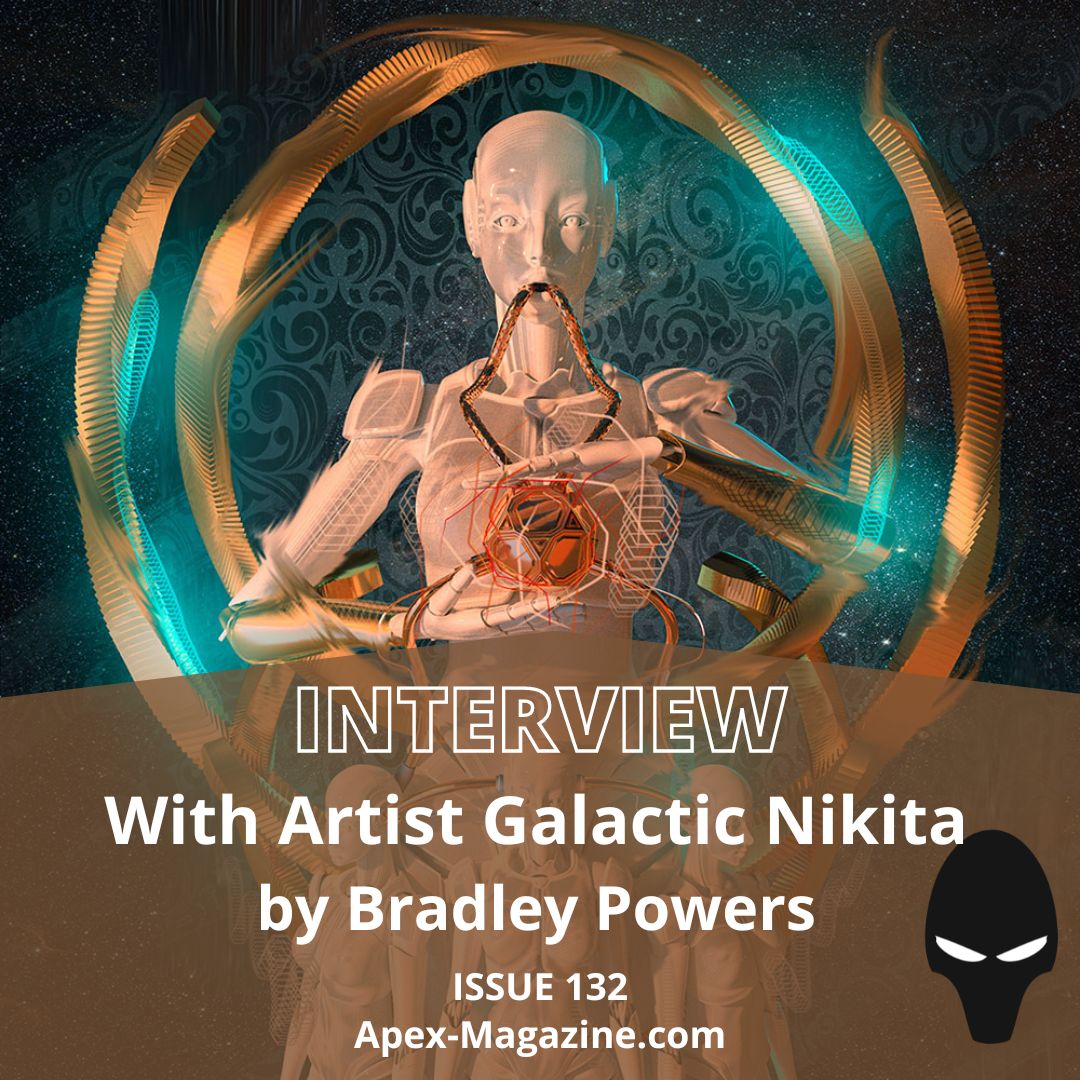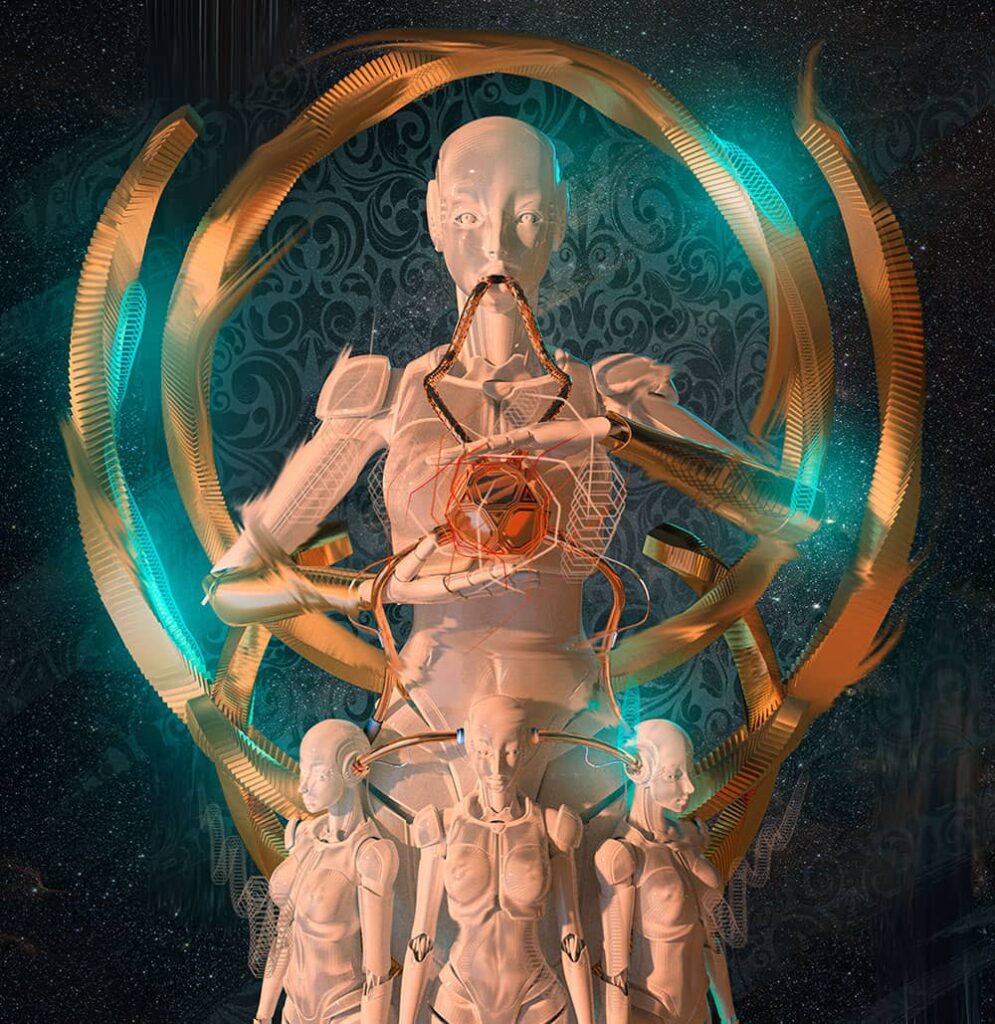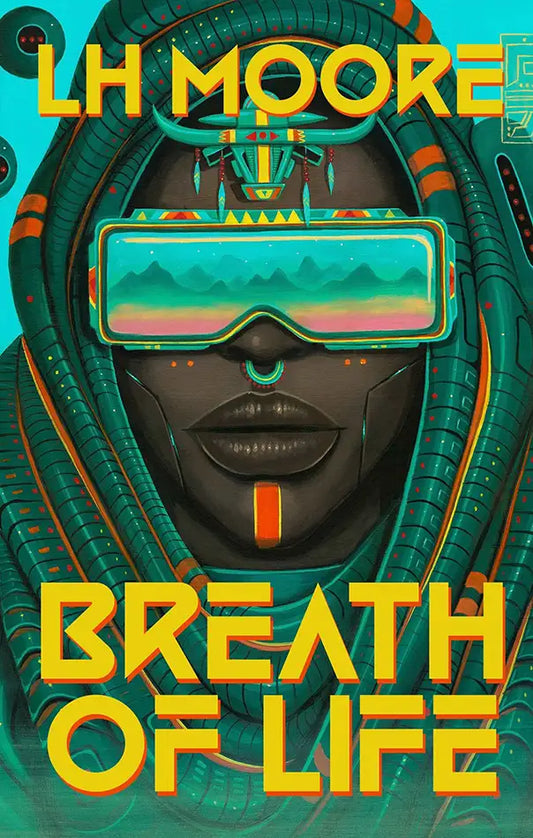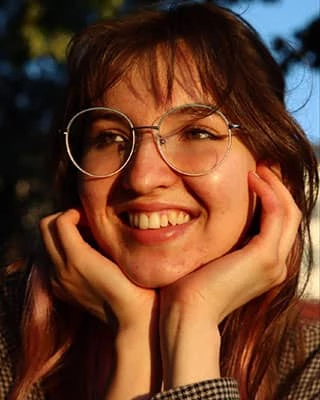
This month’s cover is “Cyber Entity” by Galactic Nikita, a freelance artist and designer who is currently focusing on 3D product rendering. Nikita’s works focus on the techniques that come with 3D modeling technology as well as the questions of our existence.
APEX MAGAZINE: What draws you to create works surrounding the ideas of self-actualization and technology? A personal experience, movie, another artist?

GALACTIC NIKITA: As far as I can remember, I was always asking questions and wanted to know everything that happens inside or outside of me. I was always a very curious person and one who thinks critically, most of the time against what the majority of other people think. In my twenties, I started asking clearer questions: “Who am I?”; “What is this life?”; “What is the purpose of me, my life, this planet?” etc… And, of course, with how life is designed, I got answers to my questions bit by bit from other people and situations in my life. At the time, I was very interested in spiritual thinking and topics and that was reflected in my art. Art, as you know, is an expression of oneself and when I look at some of my older artworks, it shows clearly what state of mind I was in at the time. What I was thinking of, what was my interest, where my mind was... All the different interests and curiosities I had I always put into artworks.
Also, I am very interested in the future and current new technologies that arise. Cryptocurrency, robotics, AI, etc … I like to imagine different scenarios of how the world could look like in the future, so many artworks have a technological, robotic flair.
Sometimes other artists inspire me too, of course. For example, I see an artwork, it resonates with me or I like the technical aspect of a particular artwork, and I directly get new ideas on how I could implement those things in my artwork.
AM: What is the process that goes into creating your 3D artworks?
GN: It varies a lot, I guess. Most of the time I watch YouTube tutorials or courses to learn new skills/technical things. After I watch a few, I try to implement them somehow in my work. Most of the time, I get inspiration and new ideas by doing and learning. And when I have a new idea (I don’t know where or how exactly it comes from. It just comes out of nowhere) I work it out in the 3D program. Often I get stuck and don’t know how to accomplish some aspect technically, so I go back to YouTube to search for how to do it, and so on.
Most of the time I use Cinema 4D for creating the 3D scene/composition, I render the materials and textures with Octane Render, and I always do a bit of post-processing with Adobe Photoshop.
AM: Some of your works have intricate landscape settings like “Lost and Found,” others have patterned backgrounds like “Lost in Beauty,” and others have a solid background. What thought process goes into choosing the settings for the forms you create?
GN: Honestly, often when I am in the creative flow it just happens. I don’t think much about it. I just try out what works and what doesn’t. Also, it’s important to have a focus point. For example, when my main object/person is already full of small details and has its own meaning/story I don’t want to put too much in the background. That would be too much for the eye to focus on. Otherwise, most of the time it’s just implementing what I have learned in courses and tutorials.
AM: In your bio, you mention an interest in graffiti. How does that carry into your current work?
GN: At the current moment, I am not interested/focused on graffiti anymore, but graffiti was a huge part of my life and artistic experience. When I was 12 or so, back in Berlin, I started to try out graffiti. I instantly loved it. I loved the colors, the shapes, the letters, and all the experimentation it brought. I loved the fact that you have a gray wall somewhere that is ugly and boring and you paint it with a lot of colors and shapes, transforming a random wall somewhere in the city into a colorful, bright thing.
Then I got deeper into graffiti like I would say every graffiti artist does in the beginning. I started to paint illegally. I loved the freedom—I could do whatever I want, wherever I want and I loved the adrenaline rush and the risk it brought. I was painting for over 10 years on and off, sometimes more, sometimes less. But in that time, I learned a lot about colors, composition, creativity, geometrical shapes, etc. that influences my artwork and style now.
AM: You mention that your music “directly juxtaposes” your visual works. More recently, you’ve worked on product design. Can you explain the turns you’ve taken in your work?
GN: Oh yes, my music juxtaposes my art style. In my early 20s, I started clubbing in Berlin. I found a lot of joy in dancing to techno music all night long. Later, I was a DJ and played in a lot of Berlin clubs. That’s a whole different story, but my music style was very rough, hard, deep, and dark. Making music was the most emotional thing I have ever done. Nothing is more pure and honest than making music. I also have a very dark, deep, rough side of me and I am confronted with it when I am on my own, which is most of the time. It’s not always bright and colorful like my art. I can’t explain it but my art shows one side of me—the bright, positive, loving, curious, happy, funny side and music shows the deepness, the darkness, the pain inside of me. The music was a “valve” for my emotions, which I couldn’t express in other ways.
As you can see through my social media, I am not doing the kind of art I did before anymore. There are a lot of reasons why. I like to try new things and when I see something I am interested in I want to understand how to do it, like when I found 3D art. I enjoyed it a lot, I learned A LOT, and I studied my emotions and creativity. But then I started to realize I’m just doing it for myself. It has no other real-world value for the outside world (that’s my opinion and I know a lot of other people think differently). It’s just creating art, but at the end of the day, most people see your picture for five seconds on Instagram or so and scroll on. Then the image is gone forever for them. Also, it doesn’t solve problems. It shows them, but it definitely doesn’t solve them and I am realizing now more and more that I have always been a problem solver.
Further, I left Germany two years ago to travel the world and depleted my savings so I have to find a way to make money. In all the years I made art I earned almost no money. Also, I don’t see myself as an “artist” anymore who has a social media account and is active 24/7 on it as an artist. So I found an interest in 3D product rendering. It’s so different. You focus on one particular thing (the product) and put all your skills, experience, and creativity into that one thing. You work more often with people and solve their problems and earn money with it. At the moment, it just feels like the right thing to do and I enjoy it.
AM: Thank you, Nikita, for sharing your work and your story! There is certainly a lot to learn and try out when finding our places in this world. You can see more of Nikita’s artworks at galacticnikita.com/art-gallery/ and more of his current 3D product rendering at galacticnikita.com.









